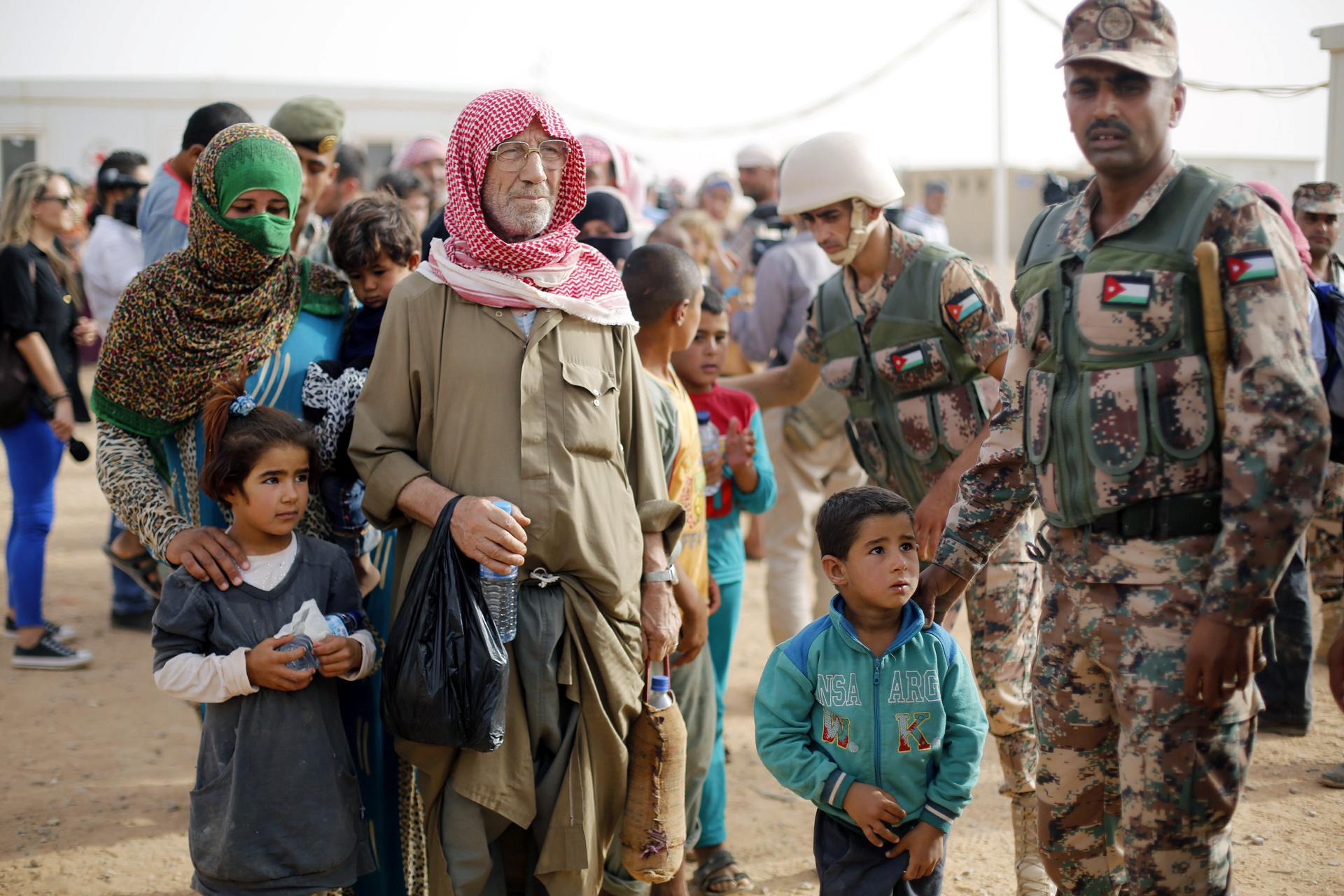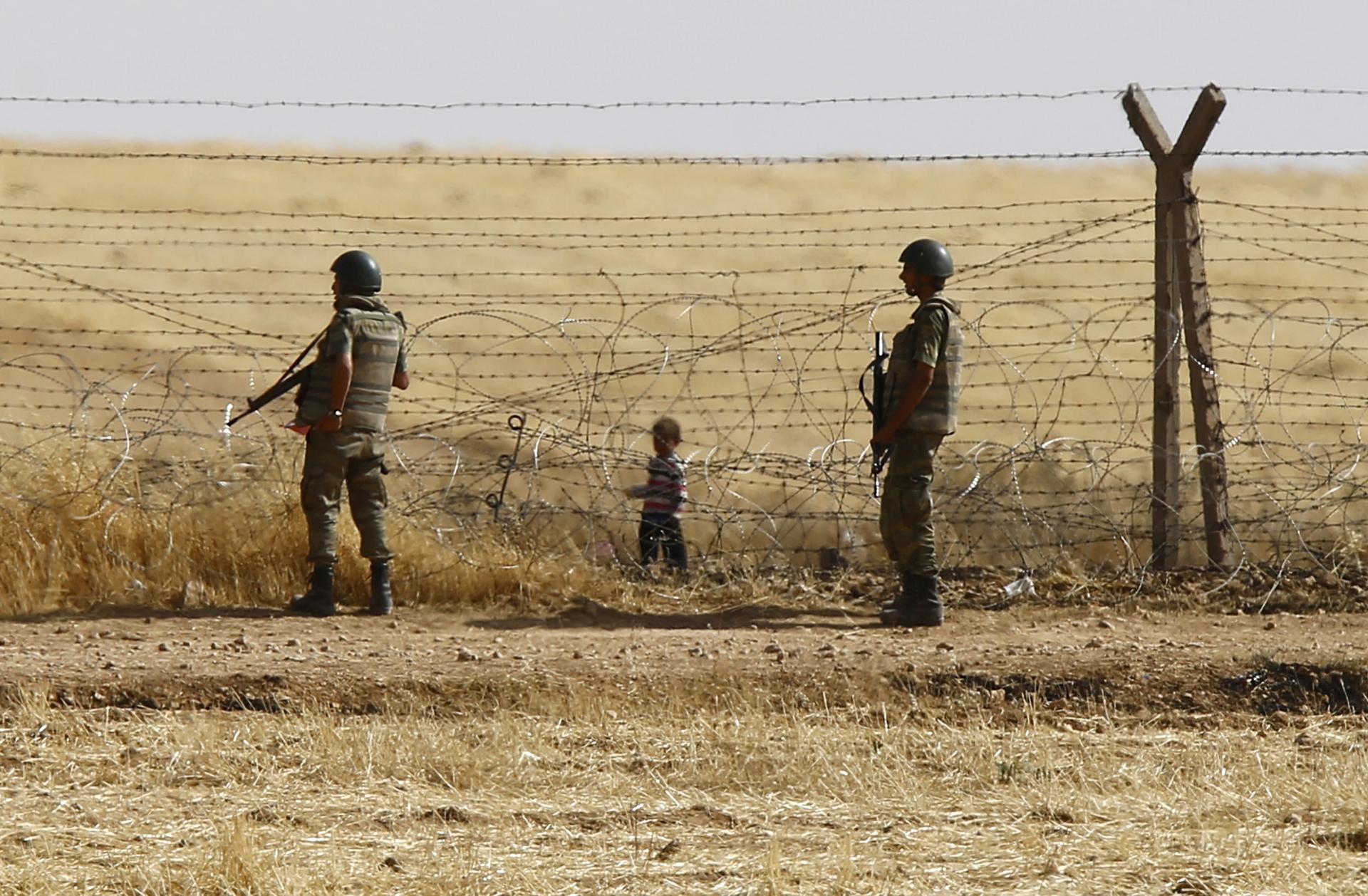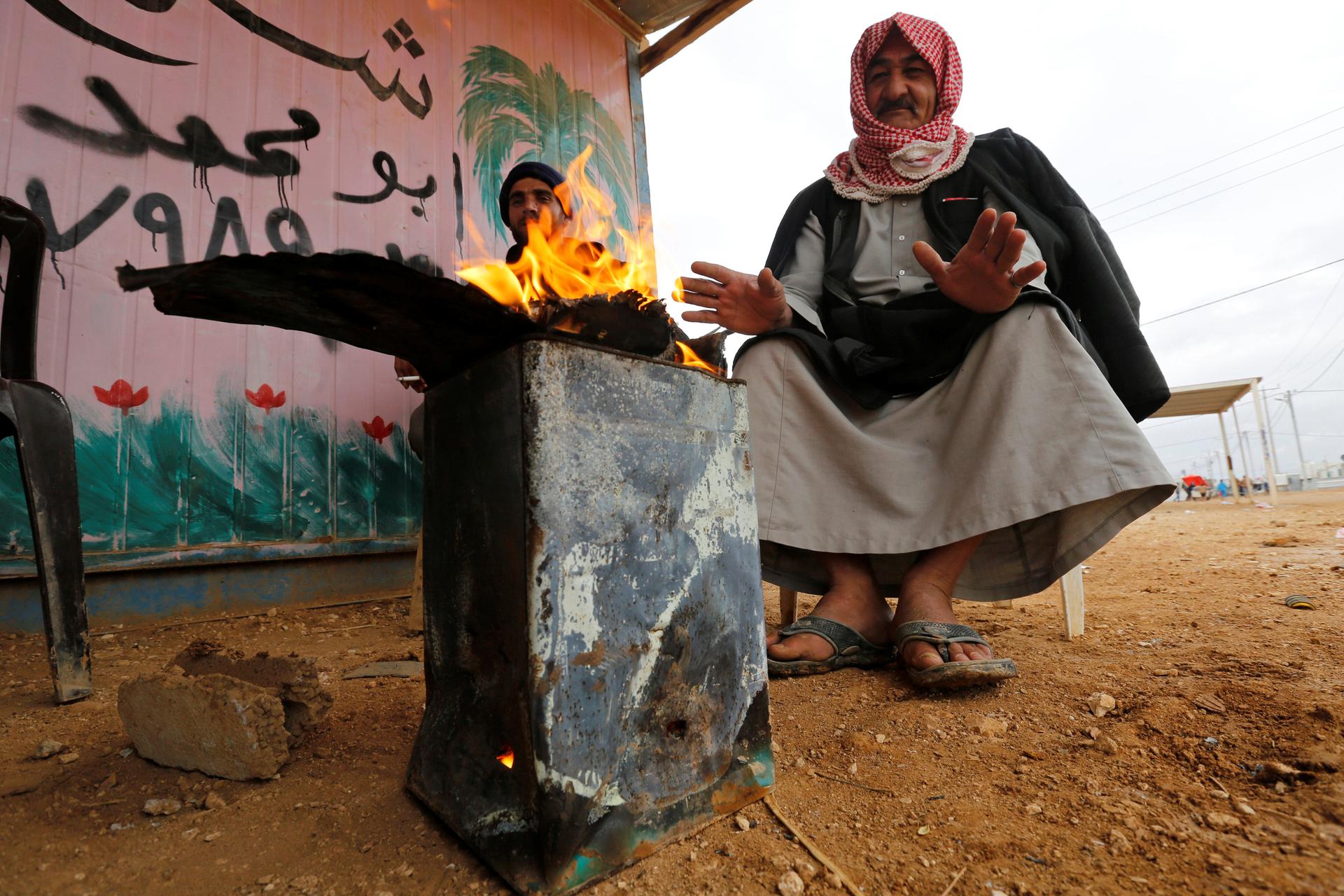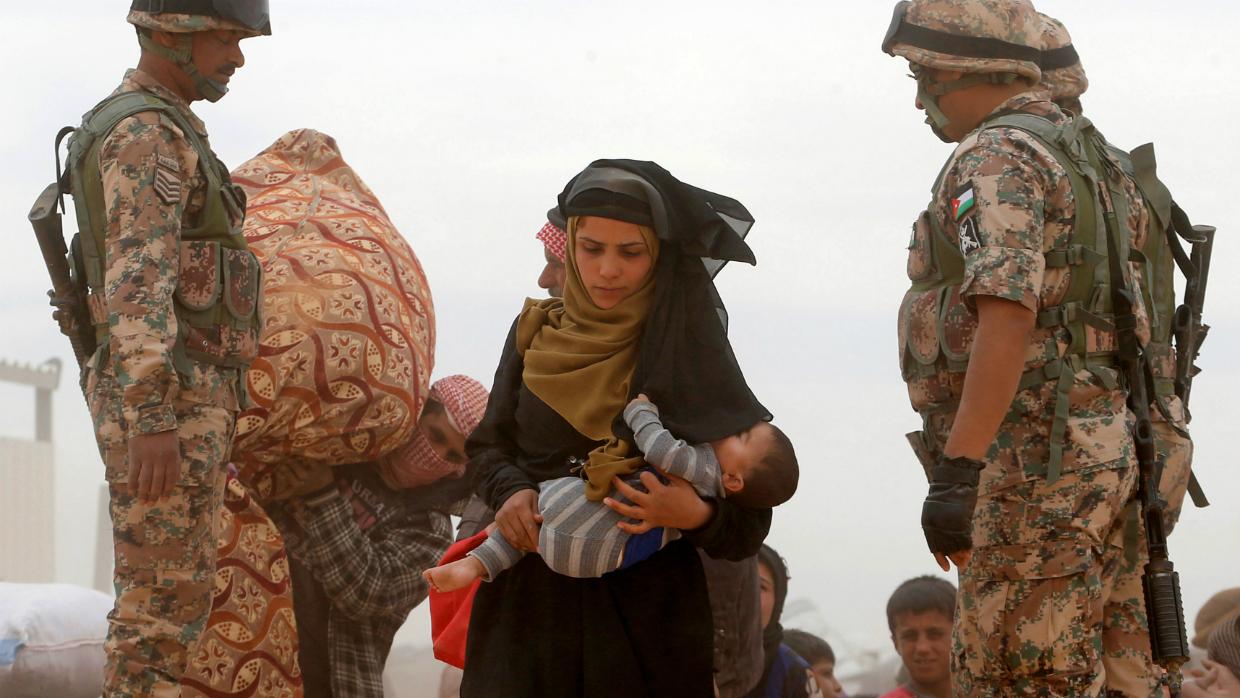What 2017 could bring for millions of displaced Syrians
A Syrian refugee woman, who is stuck between the Jordanian and Syrian borders, holds her child near the town of Ruwaished, in the Hadalat area, east of the capital Amman, May 4, 2016.
What will 2017 bring for those people who have been displaced by the ongoing Syrian conflict?
As 2016 drew to a bloody close in Syria and the government took back control over eastern Aleppo, over 4.8 million Syrian refugees continued to seek safety and a means of living a dignified life across the Middle East. There are 2.8 million Syrians currently registered in Turkey, over a million in Lebanon, and around 656,000 in Jordan. To put this figure into context, a total of 884,461 Syrian refugees applied for asylum in Europe between April 2011 and October 2016.
Meanwhile, a media focus on international forced migration continues to leave internal displacement largely invisible to international audiences. It also hides the realities of of millions of Syrians who are physically prevented from crossing Syria’s borders to its neighboring countries.
Here's what the new year could bring for millions of these Syrians.
Continually seeking safety
More than 6.3 million people remained displaced inside Syria’s borders at the end of 2016. Syria’s internally displaced people (IDPs) remain at risk both within the towns and cities they once called home, and also when attempting to escape. These IDPs include Syrian citizens, as well as 430,000 Palestinian refugees, an estimated 5,000 stateless Kurds and thousands of Iraqi refugees.
In June, Jordan effectively closed its border with Syria, citing security concerns. As a result, more than 75,000 Syrian refugees have spent more than six months stranded on the Syrian-Jordanian border, including in the Rukban and Hadalat camps.
As early as 2012, Jordan had already barred the entry of certain groups of refugees fleeing Syria: all Palestinian refugees who had been living in Syria, unaccompanied men without family ties in Jordan and people without valid identity documents.

At the Rukban border crossing, in the far northeast of Jordan, the number of people in the border camps has been increasing dramatically. Satellite images published by Amnesty International showed that 90 shelters were present in July 2014. By the end of July 2016, the number had increased to 6,563, and by September it was 8,295.
Only one delivery of humanitarian aid reached the Rukban camp between June and August, and satellite images showed graves and burial sites there. Desperately needed aid deliveries resumed in October. However, such deliveries remain under threat, as do the lives of the camps’ residents. The camp was reportedly struck by a car bombing in October and an IED explosion in mid-December.
Borders will become tougher to cross
As in Jordan, Lebanon’s border controls have been increasing over the past year, with border closures and forcible returns to Syria occurring on and off since at least 2013. Michel Aoun’s election as Lebanese president at the end of October is expected to lead to even greater restrictions on Syrian refugees. Aoun’s inaugural speech called directly for Syrian refugees to return to their country of origin, irrespective of the conflict.
Aoun, along with other political leaders in Lebanon, has proposed the creation of “safe zones” within Syria, with the expectation that refugees in neighboring countries could be moved back. The international community has not yet supported such a proposal, which — history clearly tells us — could result in the creation of hypermilitarized zones that are far from “safe” for those corralled there.

Even Turkey, which has been heralded as having the most accessible border policy out of these three countries, started building a concrete wall along its 500-mile border with Syria in 2014. It is due to be completed by spring 2017. In addition to closing 17 of its 19 border crossings, Turkey routinely used physical force to prevent Syrian refugees from entering its territory last year.
This year will invariably witness new and ongoing border closures and forcible returns over the Turkish-Syrian border, in light of the ongoing unrest across Turkey and the EU-Turkey deal that allows European states to return those refugees who have crossed the Mediterranean to Turkey. This deal has helped to provide an air of legitimacy for Turkey to close its border with Syria in the name of protecting the EU, while sacrificing refugees from Syria in the process.
Lives and livelihoods
Despite significant press attention to refugee camps like Jordan's Zaatari and Azraq camps, fewer than 10 percent of all refugees from Syria across the Middle East actually live in camps. More than 4.3 million live alongside host communities in cities, towns and rural areas across Lebanon, Jordan and Turkey — in addition to hundreds of thousands of new and established Palestinian and Iraqi refugees.
In Turkey, 38 percent of all Syrian refugees are in the poor regions of the southeast. In one city, Kilis, they make up 49 percent of the population. Employment opportunities in these poor towns and cities, even in the informal market, remain low, and large proportions of both refugees and host communities continue to live in acute poverty. In Jordan, an estimated 93 percent of Syrian refugees in urban areas are living under the poverty line.
In Lebanon, over a million refugees from Syria are obliged to pay a prohibitive fee every year to renew their residence permits to remain in the country legally, and face numerous restrictions on formal employment. This has meant that increasing numbers of refugees from Syria are forced to live in hiding. Syrian men are particularly vulnerable to arrest at the many checkpoints across Lebanon and can find themselves at risk of immediate deportation. As a result, hundreds of thousands of women and children continue to engage in unsafe and exploitative forms of labor to survive.
Palestinian refugees living in Lebanon have for over 60 years been prohibited from employment in over 20 professions, including medicine, law and engineering. Newcomers can only enter formal employment if they are sponsored by a Lebanese employer through a system which effectively leads to exploitative labor. A similar sponsorship system exists in Jordan and Turkey.

The international community is encouraging host states to grant Syrian refugees legal access to the labor market in Lebanon, Jordan and Turkey to overcome these vulnerabilities. But given high unemployment and impoverishment levels among each country’s own citizens, this seems unlikely.
Turkey has been heralded for accepting such a large number of Syrians and for officially developing policies to grant Syrians the right to work legally in the country. But between last January and April, only 2,000 Syrians applied for permission to work in Turkey, and the actual number of permits issued remains undisclosed.
As states continue to develop increasingly restrictive policies, and as the international community continues to fail to deliver its promises to meaningfully support Syrian refugees, local communities will continue to be the most important sources of support, even when they themselves are highly vulnerable. Regional and international leaders alike have a great deal to learn from the humanity and hospitality of these communities.
A version of this story was originally published by The Conversation.
